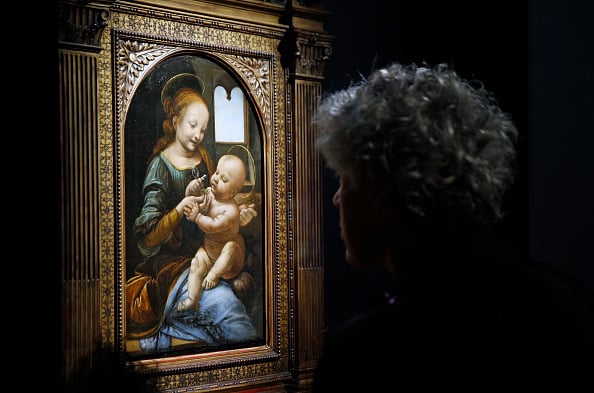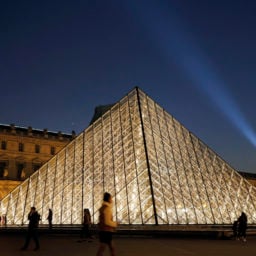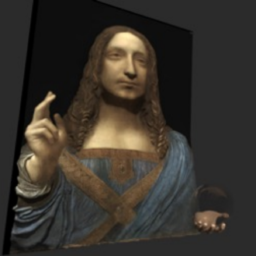Five hundred years later and Leo’s still got it.
The Louvre’s headline-making “Leonardo da Vinci” exhibition, which marked the 500th anniversary of the Renaissance master’s death, closed its four-month run this week with a record-breaking figure: in total, 1,071,840 visitors traveled from around the world to marvel at the unprecedented retrospective.
The outstanding attendance figures shattered the Louvre’s previous record of 540,000 visitors, which was established for an exhibition of Eugène Delacroix in 2018. Daily attendance numbers for the Leonardo show hovered at nearly 10,000 people.
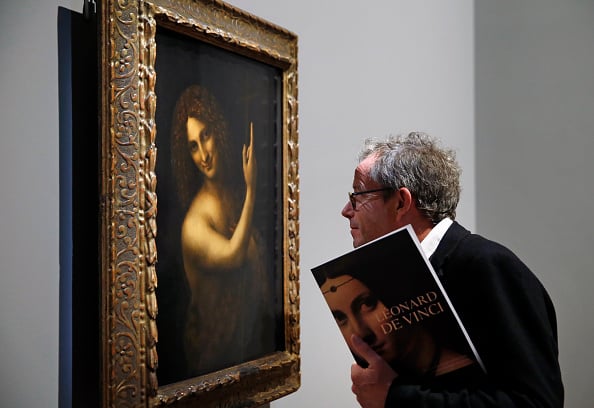
A visitor looks at Saint Jean Baptiste by Leonardo da Vinci on view at the Louvre through February 24th, 2020. Photo by Chesnot/Getty Images.
The figures were bolstered by the museum’s addition of 46 evening openings, allowing visits to see the show until 10 p.m. Museum membership grew by over 10 percent over the course of the exhibition.
“It’s wonderful that 500 years after his death, an Italian Renaissance artist continues to fascinate the general public so much,” Jean-Luc Martinez, president and director of the Louvre museum, said in a statement.
“Today, I have two reasons for pride: the success of bringing together the greatest number of Leonardo’s works and in welcoming so many and such diverse audiences.”

Strikers block the Louvre entrance on January 17, 2020. Photo by Edward Berthelot/Getty Images.
Highlights of the exhibition included five of the museum’s own paintings, including Saint Jean Baptiste, Virgin of the Rocks, and the Mona Lisa (which remained in its usual location) along with four borrowed paintings: Benois Madonna, the La Scapiliata, St Jerome, and Portrait of a Musician.
Conspicuously absent was Salvator Mundi, which became the most expensive work of art ever purchased when it sold at Christie’s for $450 million in 2017 and has since become the subject of much scholarly conjecture.
The past few months have been eventful for the Louvre.
Back in January, the museum was forced to shut down for a day as yellow-vest demonstrators blocked its entrance. The institution has also recently drawn scrutiny for its relationship to the Sackler family and has struggled with issues of overcrowding. When the Mona Lisa was temporarily moved to a new location in the museum during the summer of 2019, chaos ensued.
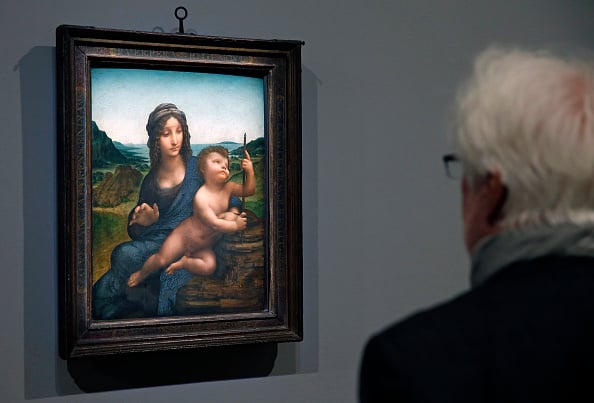
A visitor to the Louvre looks at The Virgin and the Child by Leonardo da Vinci. Photo by Chesnot/Getty Images.
Still, such woes did nothing to stymie the tide of a public eager to see Leonardo.
During the last three days of the exhibition, the demand was such that the museum kept its doors open for nearly 81 hours straight, offering free admission, coffee, and madeleines.
The red-eye strategy allowed an additional 30,000 visitors to see the show in its final days. But even then, some art lovers were still shut out after the final timed tickets were snapped up in under three hours.
Perhaps as a comfort to these disappointed Leonardo fans, the Louvre has announced that it will be releasing a film focusing on the exhibition, titled A Night at the Louvre: Leonardo da Vinci, later this year.
